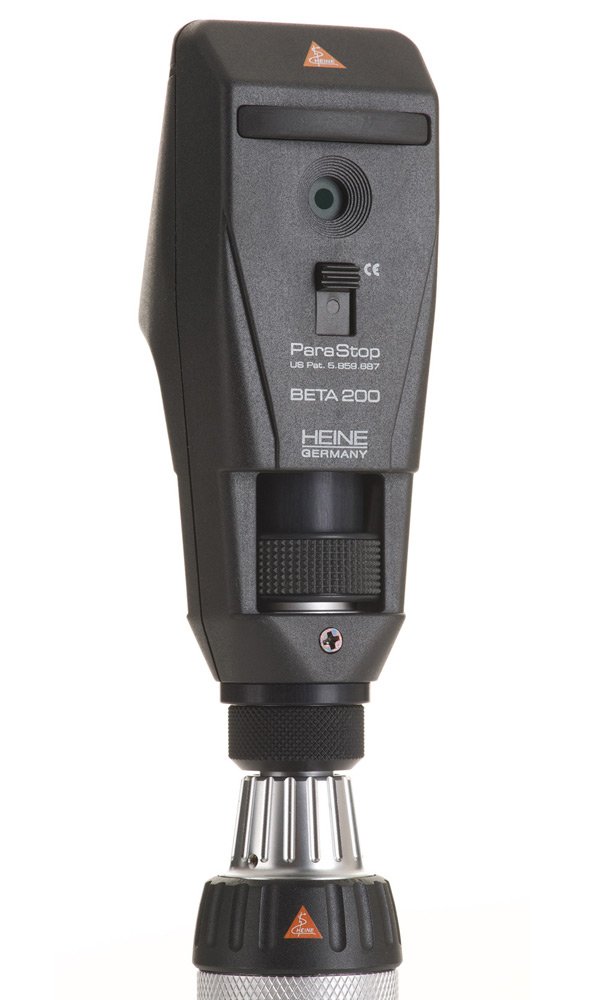A retinoscope is an essential tool for optometrists and ophthalmologists, playing a pivotal role in determining refractive errors in patients.
Whether you are a professional seeking to upgrade your equipment or a student entering the field, selecting the right retinoscope is vital. Here, we review and compare three popular models, highlighting their features, advantages, disadvantages, uses, and unique characteristics.
Welch Allyn 3.5v Streak Retinoscope with Nickel-Cadmium Rechargeable Handle (18342-VC)
Price: $488.00
Features:
3.5v halogen illumination for precise streak visualization. Nickel-Cadmium rechargeable handle for reliable power during extended usage. Compact and lightweight design for comfortable handling.
Advantages:
High durability, making it a long-term investment for clinics. Halogen light provides clear streak patterns for accurate diagnosis. Rechargeable battery is cost-effective over time.
Disadvantages:
Slightly older illumination technology compared to LED models. Requires frequent charging for heavy-duty users.
Uses:
Perfect for general optometric use and teaching purposes due to its reliable illumination and ergonomic design.
Best For:
Practitioners seeking a reliable, budget-friendly option for routine eye exams. It’s especially effective in pediatric practices where accuracy is critical.
Maintenance Tip:
Regularly clean the lens to maintain clarity and prevent buildup from environmental factors.

Heine Beta 200 Streak Retinoscope 3.5V – Standard AV Connector
Price: $491.00
Features:
High-performance 3.5v Xenon halogen bulb for consistent brightness. AV connector compatibility for flexible power options. Adjustable aperture for fine control over streak shape and direction.
Advantages:
Excellent build quality with precision engineering. Smooth adjustment settings, ideal for both novice and experienced practitioners. Compatible with a wide range of power supplies, enhancing versatility.
Disadvantages:
Slightly more expensive than similar halogen models. Requires careful handling to maintain bulb integrity.
Uses:
Highly recommended for professional clinics needing a robust, adaptable retinoscope for diverse patient needs.
Best For:
High-volume practices that demand precision and durability in their diagnostic tools.
Expert Recommendation:
Pair this device with Heine’s lithium-ion handle for extended battery life and reduced downtime during clinics. The handle’s compatibility ensures seamless operation, making it a valuable addition for practitioners who require dependable tools.

Matronix Heine Retinoscope Beta 200 | Objective Refraction Tool
Price: $790.00
Features:
Advanced LED illumination for superior brightness and clarity. Large battery handle ensures extended operation without frequent charging. Portable and ergonomic design tailored for busy practitioners.
Advantages:
LED technology offers better lifespan and efficiency compared to halogen. Large battery handle provides uninterrupted performance for long sessions. Lightweight and travel-friendly, making it ideal for on-the-go professionals.
Disadvantages:
Significantly higher price point than halogen-based. May not be ideal for budget-conscious buyers.
Uses:
Designed for optometry experts requiring precision and portability in demanding environments.
Best For:
Specialists and experienced professionals who need high-performance equipment for advanced examinations.
Care Tip:
Avoid overcharging the battery to extend its life and ensure consistent performance.

Welch Allyn 18240 Elite Streak Retinoscope Head Only
Price: $399
This head-only option from Welch Allyn is perfect for practitioners who already own a compatible power source. Its superior streak quality enhances efficiency during refractions.
Features:
2.8X brightness for better visibility. Crossed-linear polarizing filter removes 99% of glare from trial lenses. Sealed optics keep dust out for cleaner exams. Compatible with all Welch Allyn 3.5V power sources.
Advantages:
Affordable compared to full kits, especially for those with existing power handles. Polarizing filter improves accuracy by reducing lens glare. Compact and portable, fitting seamlessly into any practice.
Disadvantages:
Sold as head-only; users need to ensure compatibility with their power source. Limited features compared to some full diagnostic systems.
Best For:
Practitioners seeking a high-quality, cost-effective upgrade to their existing equipment.
Maintenance Tip:
Store the retinoscope head in a dust-free case to preserve its optical clarity and performance.

Comparison of Retinoscopes
| Feature | Welch Allyn | Heine Beta 200 | Matronix Heine Beta 200 |
|---|
| Price | $488.00 | $491.00 | $790.00 |
| Illumination Type | Halogen | Halogen | LED |
| Battery | Nickel-Cadmium Rechargeable | AV Compatible | Large Battery Handle |
| Portability | High | Moderate | Excellent |
| Best For | Budget-friendly, reliable use | Versatile clinical use | Precision-focused professionals |
What is a retinoscope?
A retinoscope is an optical instrument used by eye care professionals to assess the refractive error of a patient’s eyes.
How does a retinoscope work?
It projects a beam of light into the eye, and the reflections from the retina are observed to determine the presence and degree of refractive error.
What are the main types of retinoscopes?
The primary types are streak retinoscopes, which use a linear beam of light, and spot retinoscopes, which use a circular light beam.
Which retinoscope is best for professionals?
The best retinoscope depends on your specific needs, but models like the Welch Allyn 3.5v, Heine Beta 200, and Matronix Heine Beta 200 are highly recommended
Can a retinoscope be used for children?
Yes, retinoscopes are commonly used for eye exams in children to detect refractive errors such as myopia, hyperopia, or astigmatism.
